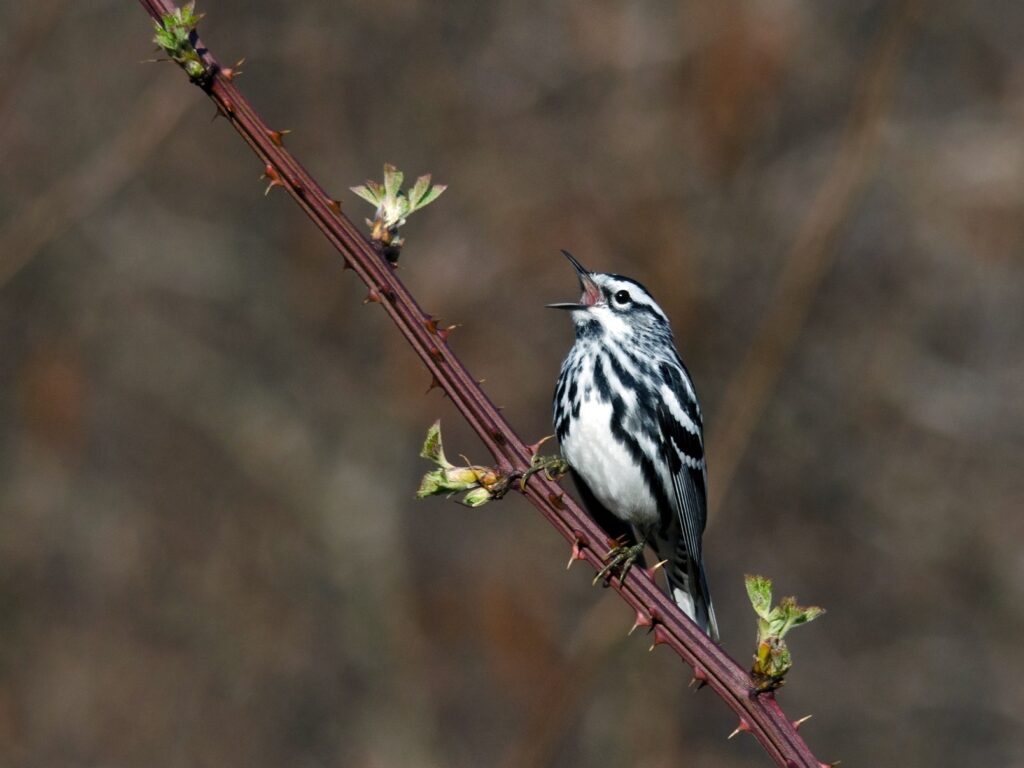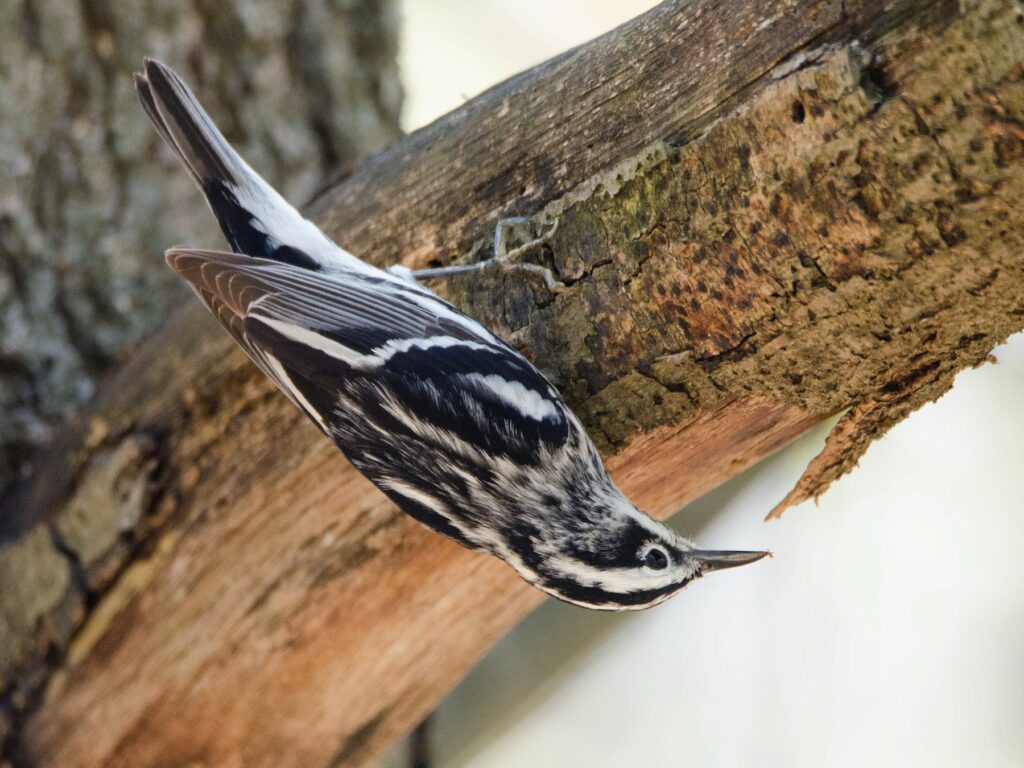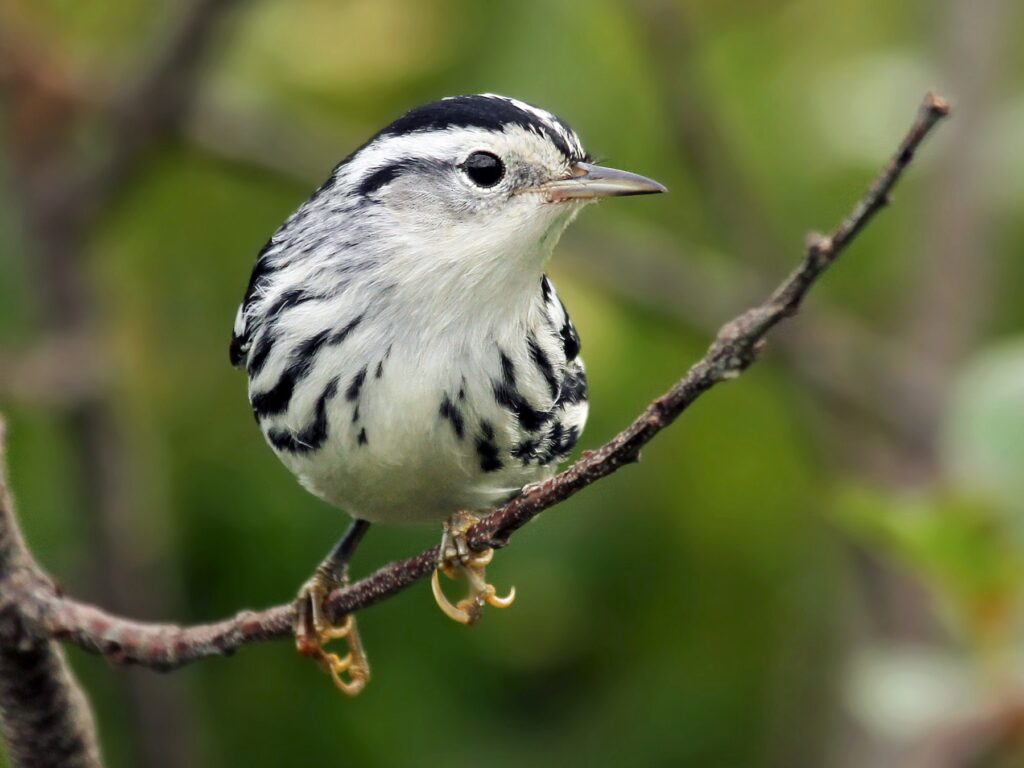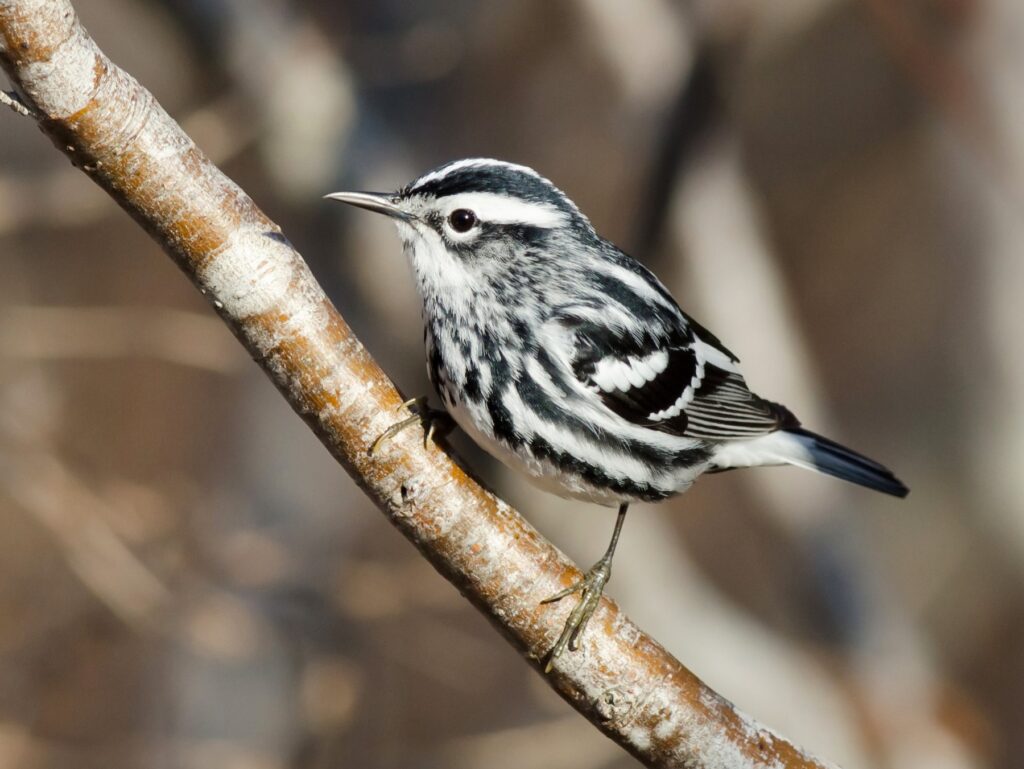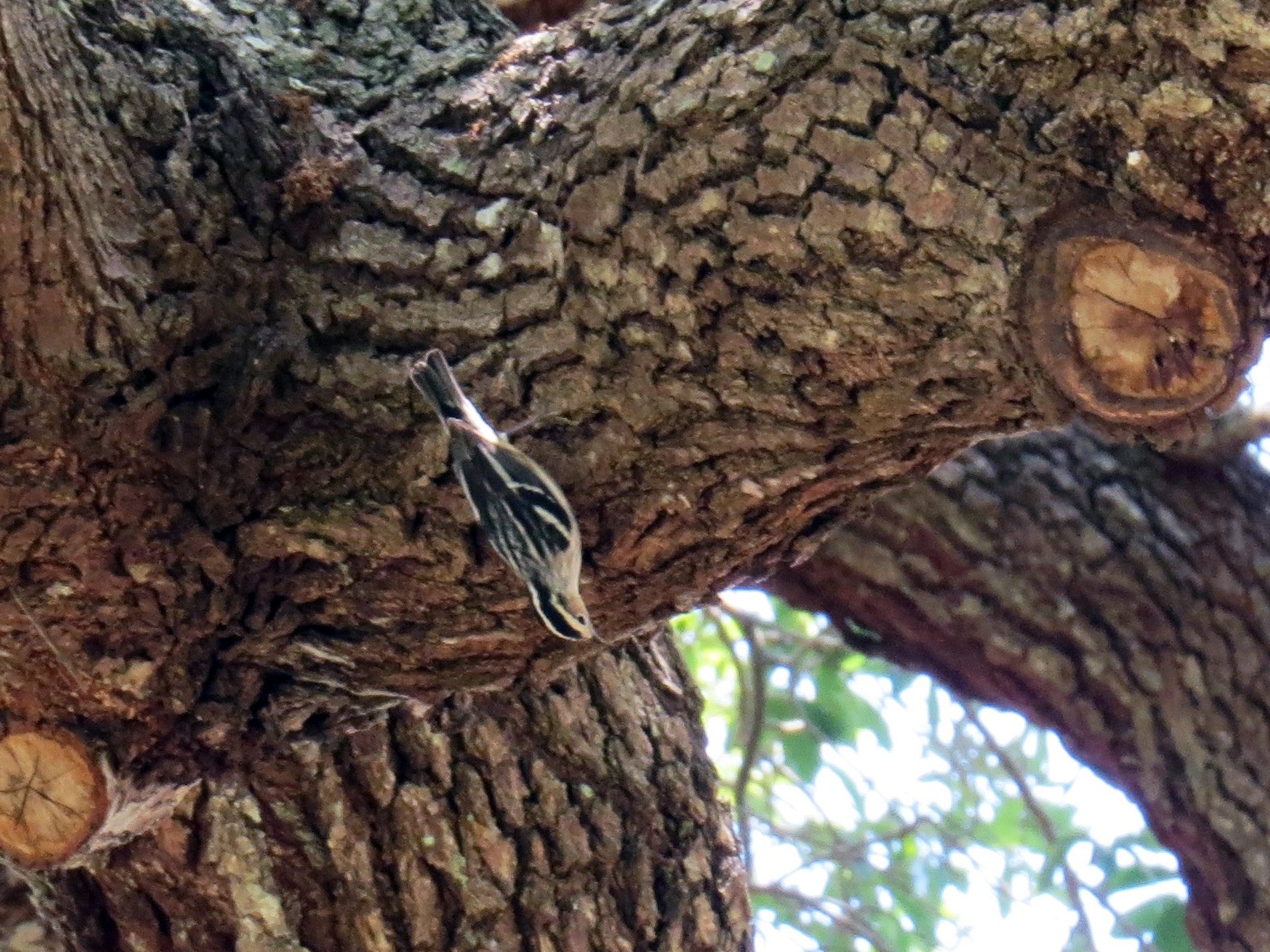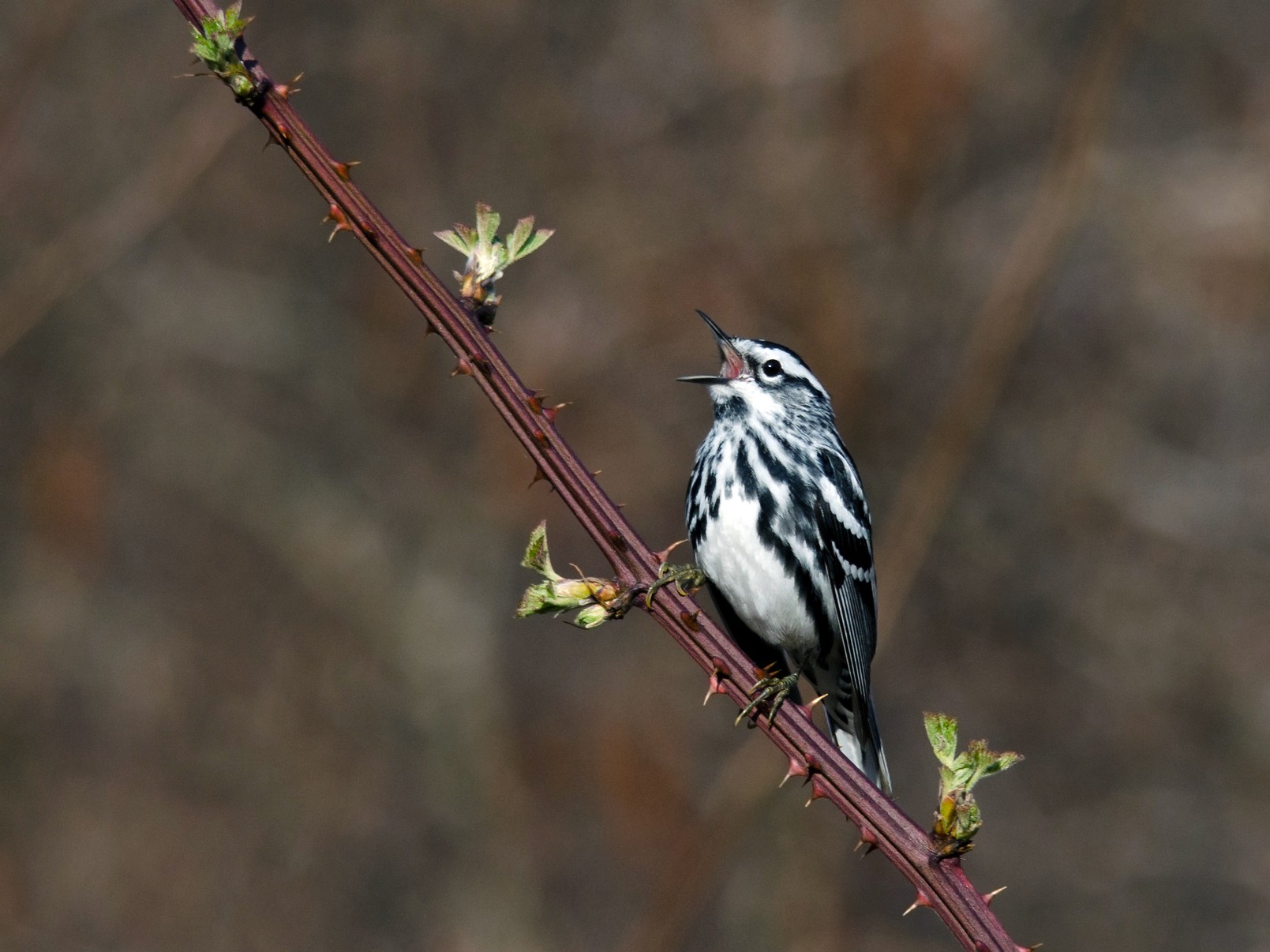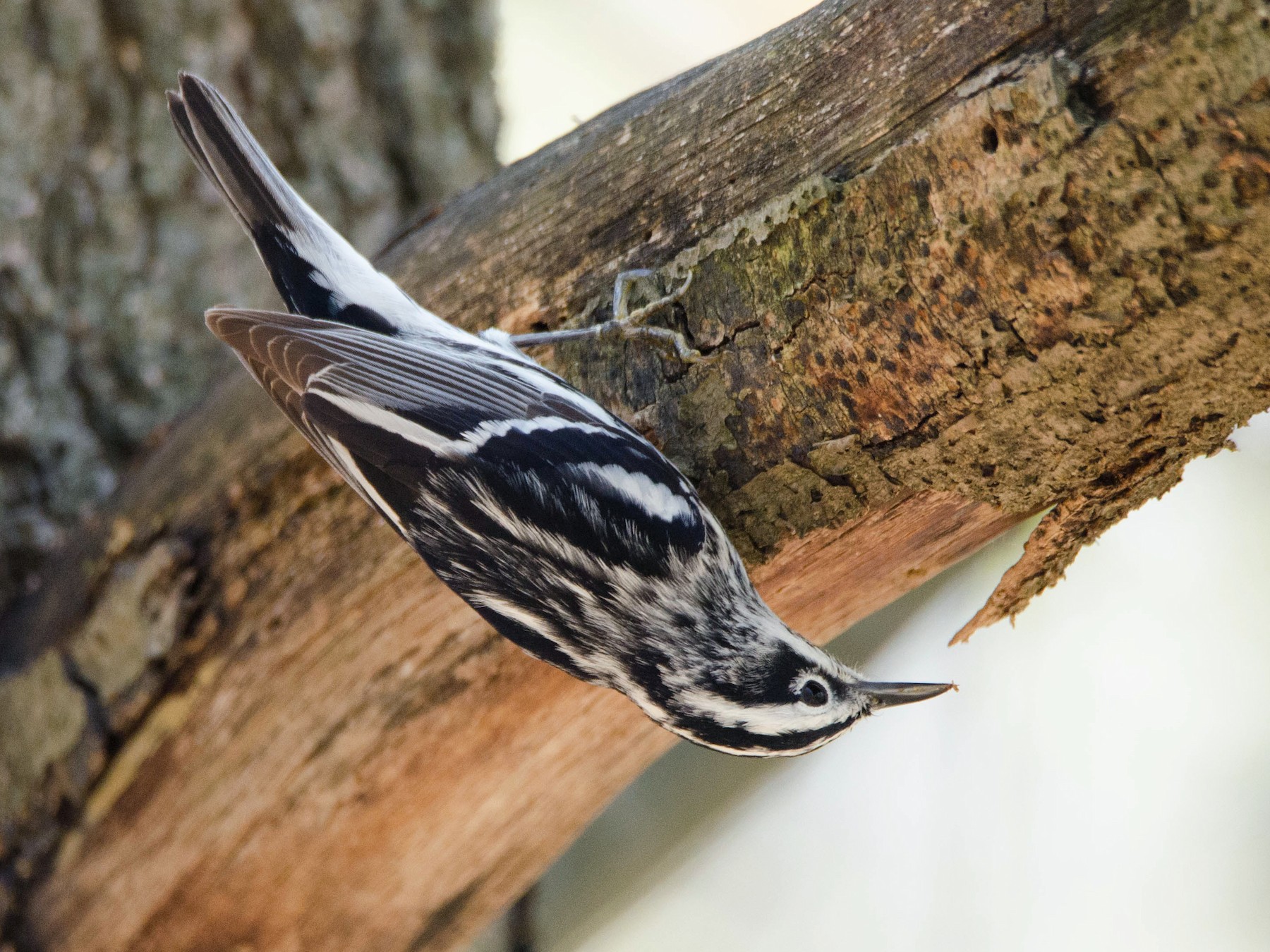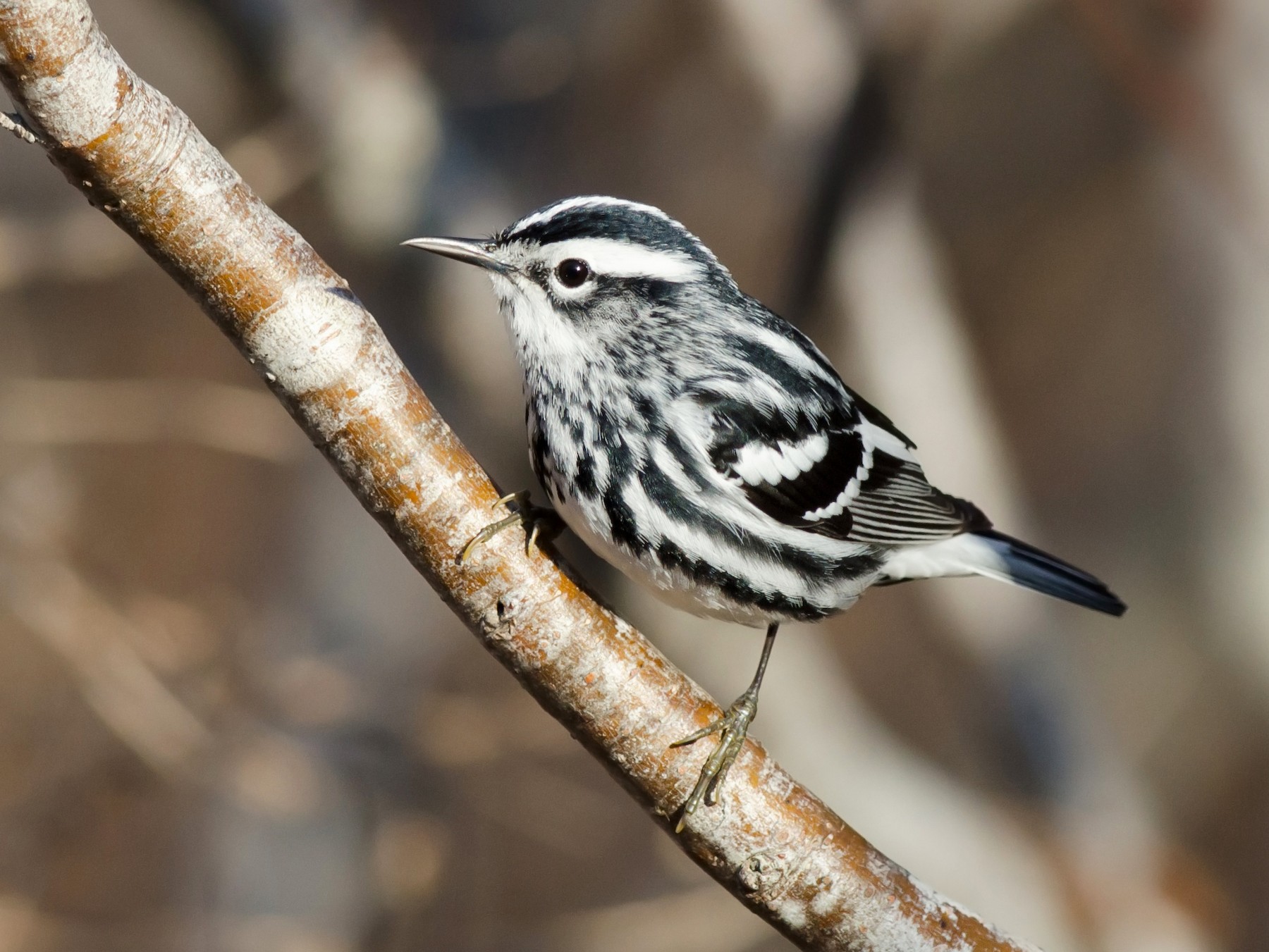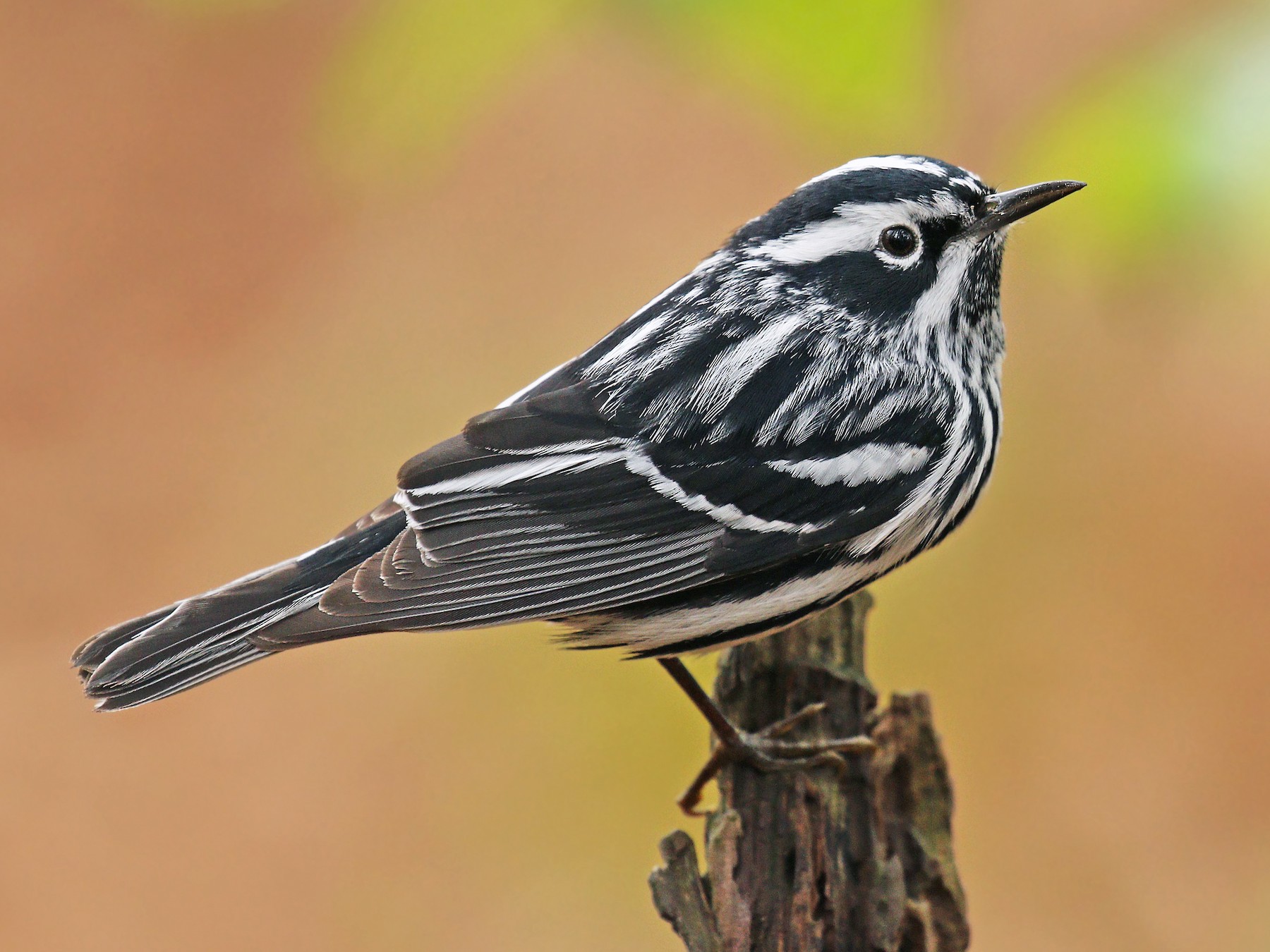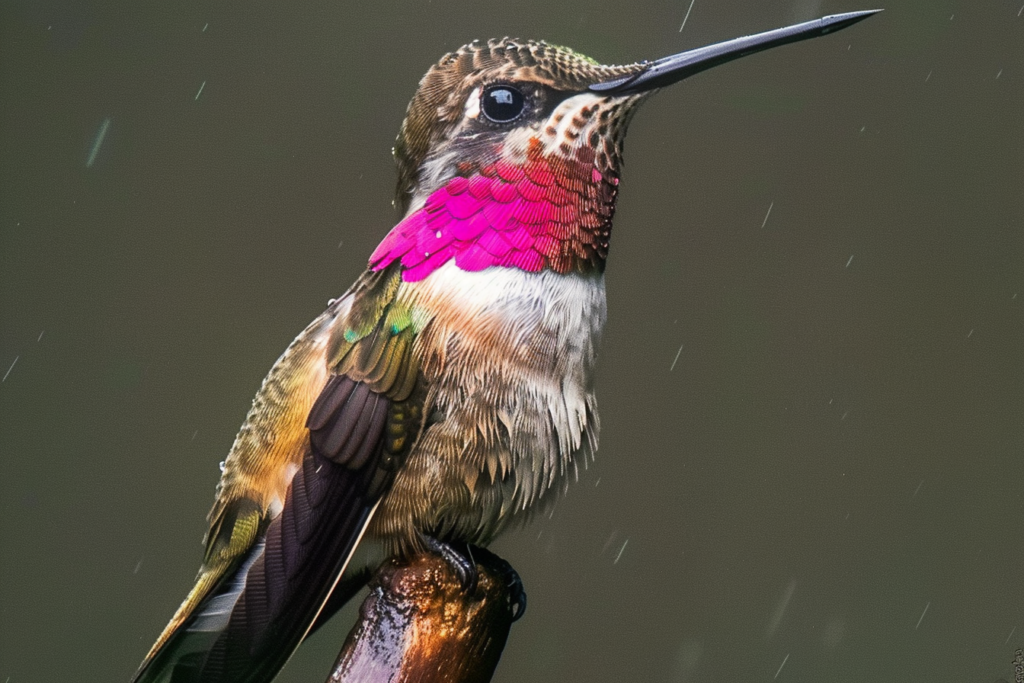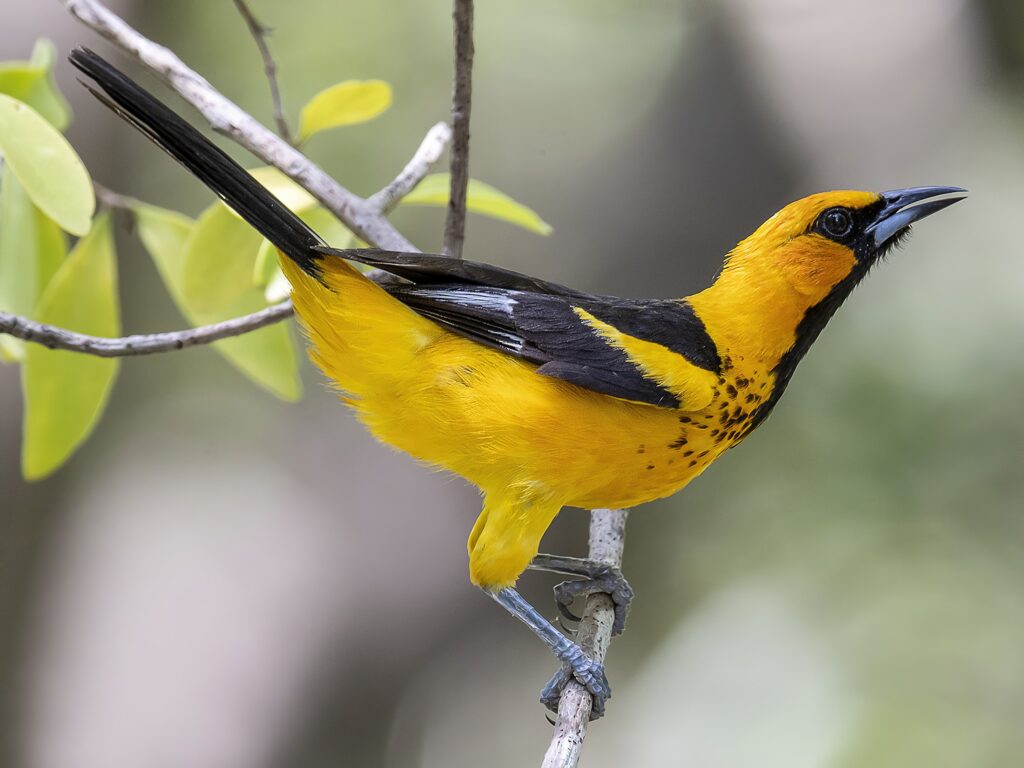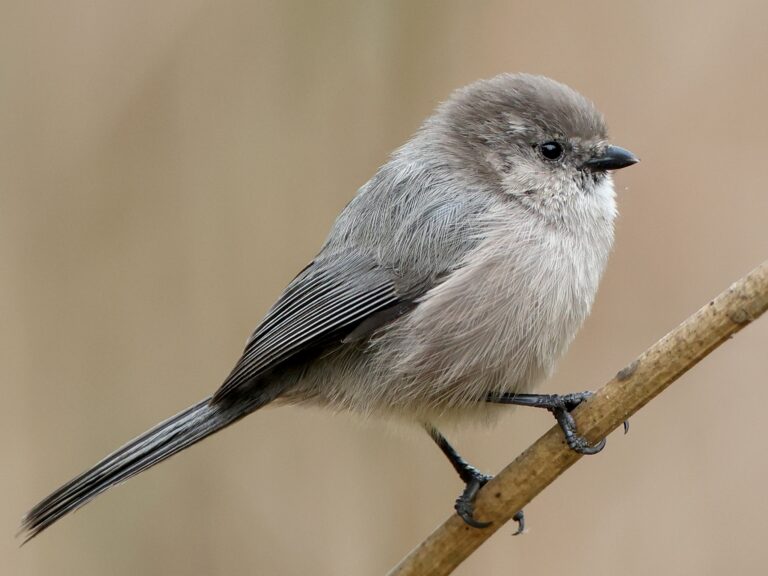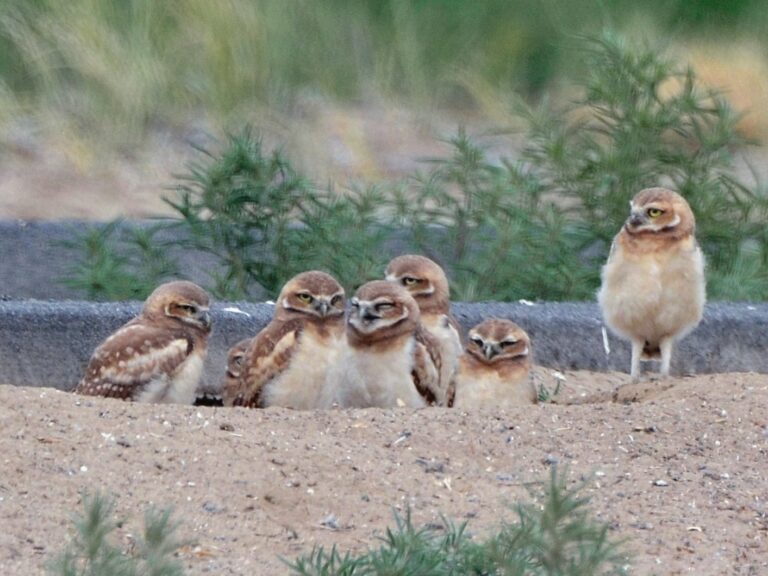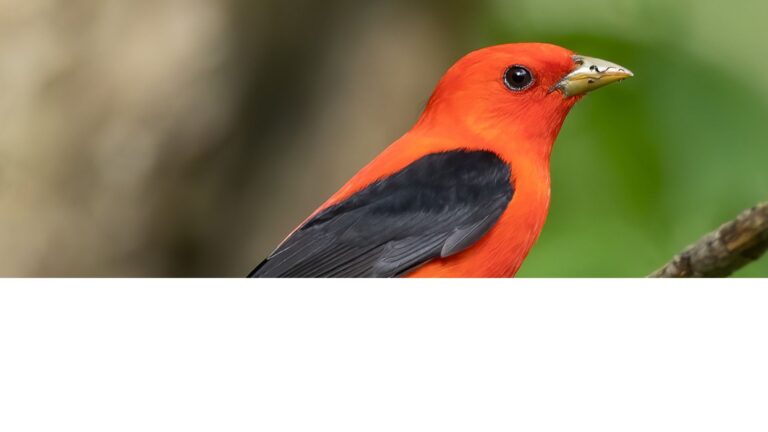Black-and-white Warbler: Discover the Striking Songbird of North America
The Black-and-white Warbler stands out in North America for its bold stripes and quirky tree-climbing moves.
Its cool look and unique field marks make it a breeze to spot among warblers.
Physical Characteristics
This bird wears crisp black and white stripes from head to tail. Males usually show off darker, more vivid markings, especially on the cap and cheeks. Females look a bit softer, with grayish or brownish hints on the head and less intense black. A slim white stripe above each eye gives the warbler a striking face.
Underneath, they’re mostly white with black streaks, while the wings and tail show a mix of bars. Juveniles keep the striping but look a little duller than adults. Watching one creep up tree bark—almost like a nuthatch—instantly sets it apart from other warblers.
Taxonomy and Classification
Scientists call it Mniotilta varia. It’s the sole member of the genus Mniotilta, which makes it a bit of an oddball in the Parulidae family. Recent multilocus research has even led to revised genus-level taxonomy for wood-warblers. The Integrated Taxonomic Information System (ITIS) lists Mniotilta varia as a valid species.
In French, it’s “paruline noir et blanc,” which honestly fits. While it shares some looks with birds like the Blackpoll Warbler, its genetics and habits keep it in a league of its own.
Distinguishing Features
Here’s what really makes the Black-and-white Warbler pop:
- Bold black and white stripes running from head to tail
- Black cap (especially on males)
- White eyebrow stripe above the eye
- Long, slightly curved bill for poking into bark
- That climbing, bark-creeping style most warblers just don’t have
Its foraging style and sharp stripes—especially the crown—set it apart from lookalikes. Even from a distance, the contrast is pretty hard to miss.
If you want to dive into the tricky world of juvenile warbler IDs, check out this guide to identifying juvenile warblers.
Sign Up for Our Monthly Newsletter
Every month we send out our newsletter about interesting (and sometimes quirky) things happening in the world of birding. Give it a try!
Habitat and Distribution
The Black-and-white Warbler hangs out across the Americas, making itself at home in all sorts of forests. It’s especially picky about certain features in its habitat, more so during migration.
Preferred Habitats
You’ll spot this warbler in mature forests with a mix of tree species. Deciduous and mixed woodlands are classic, but it’ll use forest edges and shrubby bits too. Its nuthatch-like foraging means it spends a lot of time on bark, moss, and lichen, where insects hide. The bird sticks close to foliage, steering clear of dry thickets or open grasslands.
Researchers find Black-and-white Warblers in almost any forest with real tree cover, but they skip dry, scrubby places. Moist forests with thick leaf litter are especially good feeding grounds in spring and summer. Check out more on habitat specificity.
Geographical Range
Breeding grounds stretch from southern Canada through much of the United States and into parts of Mexico. That’s a pretty big range. When winter rolls around, these birds head south. You’ll find them in Central America, the Caribbean, and up into northern South America.
They’ve been documented in places as far apart as Maine and Minnesota, always looking for forests with tall trees and dense understory. If you’re into the details, there’s more on geographic variation.
Want the best for your backyard friends?
Safflower seed is the best for wild birds because it’s rich in protein and healthy fats, providing excellent nutrition and energy. And, as a bonus, it attracts colorful songbirds like cardinals and chickadees.
Seasonal Movement and Migration
Black-and-white Warblers really go the distance. Most leave their breeding spots in late summer and reach their winter homes by early fall. Come spring, they’re on the move again—northbound in April and May. Along the way, they’ll stop in different forests, often following rivers or belts of trees.
Males and females take similar routes, but sometimes pick slightly different stopover spots, depending on cover and food. Studies on migration patterns and habitat use are starting to unravel the details. This seasonal travel lets them chase insect booms throughout the year.
Behavior and Life Cycle
Black-and-white Warblers have a quirky way of foraging and a pretty set routine each year. Their life cycle covers breeding, raising chicks, and molting.
Breeding and Nesting
Breeding season kicks off in spring, usually between April and June. Females favor deciduous and mixed forests, picking nest sites at the base of a tree or tucked into thick ground cover.
She builds a cup-shaped nest using leaves, bark strips, grass, and pine needles. Males defend the territory but don’t help with nest building. Females get fiercely protective, sometimes even attacking other birds that get too close to the nest site. Young warblers can be noisy, especially when begging for food. If you’re curious about the details, this study on wood warblers’ nesting behavior is a good read.
Eggs and Reproduction
The female usually lays 4 to 6 eggs—white or creamy, speckled with brown. She handles all the incubation, which lasts about 10 to 12 days. While she’s on the nest, the male keeps an eye on the territory and sometimes distracts predators by singing or acting as a decoy. Once the eggs hatch, the chicks are helpless and featherless.
Both parents feed the nestlings a steady diet of insects and tiny invertebrates. Chicks leave the nest after 8 to 12 days but hang around, depending on their parents for food and protection until they’re ready to forage alone.
Molting and Annual Cycle
After breeding, these warblers molt, swapping out old feathers for new ones. Fresh plumage is crucial for the long migration ahead. The annual routine goes like this: breed in North America, migrate south to Central America or the Caribbean for winter, then head back north in early spring. This rhythm lets them take advantage of insect peaks and less competition for nesting spots. For more about wood warbler habits and adaptations, this ecology and behavior resource is worth a look.
Diet and Feeding Habits
Black-and-white Warblers are all about small insects they find on trees. Their foraging style is pretty different from most other warblers.
Typical Diet
Insects are their main course—caterpillars, spiders, beetles, ants, and flies. Sometimes, they’ll grab insect eggs or tiny larvae hiding in bark cracks. They go for soft-bodied bugs, which are easier to catch and eat. When insects are scarce, they’ll eat spiders and other invertebrates.
Their diet shifts a bit with the seasons, depending on what’s out there. Studies show that even among warblers, Black-and-whites sometimes pick different prey than their neighbors. More on that in this look at dietary choices in warbler communities.
Foraging Behavior
These birds forage like nuthatches, creeping along trunks and branches, often headfirst. They search for food under bark and in crevices, rarely bothering with leaves. Their “bark-gleaning” method uses their slender bills to pick insects from rough tree surfaces. It’s a clever way to nab food that other birds miss.
They’re persistent, working over trunks and big limbs with energy. This style lets them find hidden bugs and eggs quickly. Research highlights their unique approach—they’re opportunistic generalist foragers in winter, able to handle whatever food the season throws at them.
Conservation and Threats
Black-and-white Warblers face some real challenges—habitat loss, predators, and environmental changes. Conservation efforts try to protect both their breeding and wintering grounds, plus deal with specific threats.
Conservation Status
Right now, the Black-and-white Warbler isn’t endangered. Most conservation groups list it as Least Concern, thanks to its broad range. Still, numbers have dipped a bit in recent years. Protecting big chunks of mature forest matters, since these birds need old trees for nesting and feeding.
Forest management helps, and scientists use models to track habitat loss and guide protection, especially in key breeding zones. For a deeper dive into the risks, check out this article on seasonal exposure and conservation challenges. International programs also work to save winter habitats, since these birds migrate far south. Cross-border partnerships help fight deforestation and habitat loss in both breeding and wintering areas.
Threats and Predators
Clearcutting, logging, and heavy agriculture are big threats—they shrink the mature forests these warblers rely on. Habitat loss in both North and Central/South America puts pressure on populations.
Predators are a worry too. Brown-headed cowbirds sometimes sneak their eggs into warbler nests, leaving warbler chicks struggling to compete. Snakes, squirrels, and larger birds also prey on nests.
Climate change could shake things up by altering forests and the timing of insect hatches. Conservation groups use mapping and monitoring to focus on the most important habitats.
Managing these threats is ongoing work. If you’re interested in the bigger picture, here’s a discussion of Neotropical bird conservation.
Frequently Asked Questions
The Black-and-white Warbler stands out for its striped plumage and tree-foraging habits. Both its appearance and song help birdwatchers spot and identify this species in North America’s forests.
How can you distinguish between a female and male Black-and-white Warbler?
Males show bold black-and-white stripes on their head and back. Their cheeks and throat are solid black. Females look similar but they’re paler, with gray cheeks and stripes that aren’t as sharp. They don’t have the deep black throat patch that adult males do.
What does the Black-and-white Warbler’s call sound like?
Their song is a high, thin series of repeated notes—think “wee-see, wee-see, wee-see.” The call is subtle and can get lost among other birds in spring. Researchers haven’t studied their oscine song as much as some other warblers, but its simple structure stands out. If you’re curious, here’s a review of paruline singing behaviors.
Where is the Black-and-white Warbler’s habitat range located?
They breed across most of Canada and the eastern United States. When winter comes, they head for southern Florida, Central America, the Caribbean, and parts of northern South America. In Jamaica, you might spot them among other wintering warblers. There’s some interesting data in studies of Jamaican warbler populations.
What is the breeding behavior of Black-and-white Warblers?
The female builds a ground nest, usually right at the base of a tree. She typically lays between 4 and 6 eggs. She handles incubation, while the male sometimes helps feed the young after they hatch. Their monogamous habits and territorial defense are a lot like other wood-warblers.
Are Black-and-white Warblers common at bird feeders?
You probably won’t see many Black-and-white Warblers at feeders. They really prefer searching for insects on tree trunks and branches. Sometimes, during migration, one might stop by a suet feeder. Still, they almost always choose natural foraging over anything else.
Which birds are often confused with the Black-and-white Warbler?
The Black-and-white Warbler stands out among North American warblers, but honestly, it can trip up beginners. People often mix it up with nuthatches, probably because both birds creep along tree bark while feeding.
If you look closely, the bold black-and-white stripes and the warbler’s size really set it apart from other small birds. Field guides like Warblers of Europe, Asia and North Africa offer more side-by-side visuals if you want to compare for yourself.


